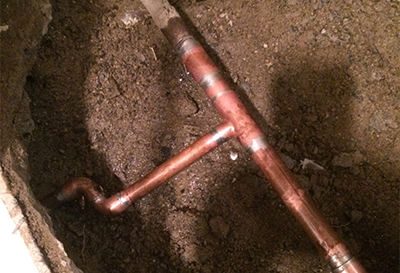6 Ways to Locate Hidden Water Leakages in Your Home
6 Ways to Locate Hidden Water Leakages in Your Home
Blog Article
The article author is making a number of great pointers related to Leaking water lines as a whole in this post beneath.

Early detection of dripping water lines can mitigate a potential catastrophe. In addition to saving you money, it will lessen the worry and irritation. The minute you locate a leakage, calling your plumber for repairs is the very best remedy. However, some tiny water leakages might not show up. Below are some hacks that help if you can not spot it with your naked eyes.
1. Check Out the Water Meter
Inspecting it is a proven means that assists you find leakages. If it moves, that suggests a fast-moving leak. This suggests you might have a slow-moving leak that might also be underground.
2. Examine Water Usage
If you spot abrupt adjustments, regardless of your usage being the very same, it suggests that you have leakages in your plumbing system. A sudden spike in your bill indicates a fast-moving leakage.
At the same time, a consistent increase each month, despite having the very same routines, reveals you have a slow leakage that's also slowly rising. Call a plumber to thoroughly inspect your building, especially if you feel a cozy area on your flooring with piping below.
3. Do a Food Coloring Examination
When it comes to water consumption, 30% comes from commodes. If the color in some way infiltrates your bowl throughout that time without flushing, there's a leakage between the tank as well as bowl.
4. Asses Outside Lines
Do not fail to remember to examine your outside water lines too. Examination spigots by affixing a garden hose. Should water seep out of the connection, you have a loose rubber gasket. Replace this and also ensure all links are limited. It will help obtain it properly took a look at and also preserved each year if you've obtained a sprinkler system. One little leak can squander lots of water and increase your water bill.
5. Examine and Evaluate the Situation
Homeowners must make it a practice to examine under the sink counters and also inside closets for any bad odor or mold development. These two red flags indicate a leak so prompt attention is called for. Doing routine inspections, also bi-annually, can save you from a significant problem.
Examine for discolorations and also weakening as the majority of appliances and also pipelines have a life expectancy. If you suspect dripping water lines in your plumbing system, do not wait for it to escalate.
Early discovery of leaking water lines can mitigate a prospective disaster. Some small water leakages may not be noticeable. Examining it is a guaranteed way that helps you uncover leaks. One little leak can squander bunches of water and also increase your water expense.
If you suspect leaking water lines in your plumbing system, don't wait for it to rise.
How to Know If Your Home Has a Hidden Leak
Water Meter Reveals Inexplicable Water Usage
If you’d like to test whether or not there’s a leak somewhere in your home, you can do this using your water meter. Here is how to conduct the test:
Don’t use any water in your home for at least 30 minutes; this also means not turning on faucets or water-using appliances.
Go outside, and check your water meter for activity.
If your water meter shows that there was activity, even though no one was using any water, this proves that there is a leak in your home.Visible Mold or Mildew Growth
Leaks behind walls create moist, dark environments that allow mold and mildew to grow and thrive. Eventually, you might see mold growth forming on the wall closest to a hidden leak.
If mold is growing in an area that receives a high amount of moisture, such as a bathroom, it may simply be an indication that better ventilation is needed. However, if you see mold growth on a wall or the ceiling in an area where you would not expect, you probably have a hidden leak.
Musty, Mildew Odor
Sometimes you might not be able to see the mold or mildew that is growing as a result of a leak. However, the smell can give the problem away just as easily. If you catch a whiff of something musty, there’s a good chance that old water is collecting somewhere in your home that you can’t see.
Stained/Warped Walls, Ceilings, or Floors
When your home soaks up water, a variety of red flags can become visible, including ceiling stains, bubbling drywall, warped walls, and sagging floors. While these issues can be caused by excess humidity, they can also be signs that a pipe or plumbing connection has started leaking behind your walls.
Inexplicably High Water Bill
After a while, you get a general sense for what your water bill should be. If you own a pool or sprinkler system, your bill will tend to be higher during summer. However, if you receive a water bill that seems especially high, and you can’t figure out what caused it, then you may have a hidden leak somewhere that’s increasing your bill.
https://www.plumbingjoint.com/blog/2019/july/how-to-know-if-your-home-has-a-hidden-leak/

Do you appreciate reading up on Locating water leaks? Give a remark directly below. We will be pleased to find out your opinion about this content. We are looking forward to see you back again before long. Appreciated our post? Please share it. Let others check it out. I enjoy reading our article about Finding hidden leaks.
Report this page